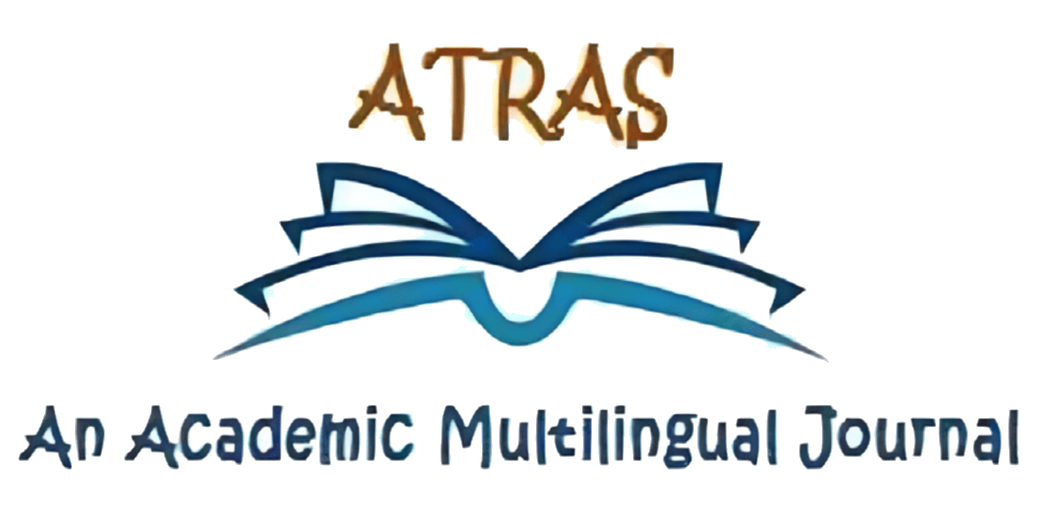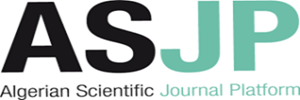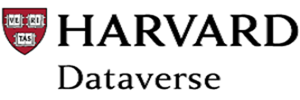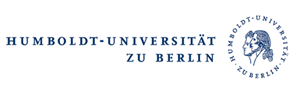Title: The Impact of Foreign Language Anxiety on Speaking Abilities of Moroccan EFL Universities Students
Baissane Omar
Department of English, Faculty of Letters and Human Sciences,
Sultan Moulay Slimane University, Beni Mellal, Morocco
Abstract:
It is prima facie valid that joining English studies at the universities has become very popular among Moroccan students. The reason behind this fact is the vital status that English has for all kinds of personal and professional aspects. However, most students in EFL Moroccan university classes seem to be reluctant to speak and interact orally in English due to the feeling of foreign language anxiety. Therefore, the purpose of this study was to find out the impact of anxiety on speaking abilities of Moroccan university students. It pinpointed the sources of foreign language anxiety and hopefully, it would contribute to the field of English language teaching in Morocco by suggesting strategies that can be used by students and teachers to overcome a widely spread phenomenon such as speaking anxiety. To do this, mixed method was adopted through two instruments. The Foreign Language Classroom Anxiety Scale questionnaire for quantitative data, which was given to 80 participants of EFL university students, and teachers’ interviews for qualitative data that were conducted with 8 experienced EFL teachers. The results obtained showed that FLA has a negative impact on speaking abilities of Moroccan university students. Furthermore, teachers admitted that students who suffer from anxiety tend to have low speaking skills. Therefore, it was recommended that students should build a strong personality, confidence and enhance their language skills. Also, teachers should be supportive and creative to help students overcome foreign language anxiety
Keywords:
foreign language anxiety, speaking abilities, strategies, sources
How to Cite this Paper:
Baissane, O. (2022). The Impact of Foreign Language Anxiety on Speaking Abilities of Moroccan EFL Universities Students. Atras Journal, 3(2), 5-23.
References
Aida, Y. (1994). Examination of Horwitz, Horwitz and Cope’s Construct of Foreign Language Anxiety: The Case of Students of Japanese. Modern Language Journal, 78, 155- 167.
Barraclough, R. A., Christophel, D. M., & McCroskey, J. C. (1988). Willingness to
Communicate: A Cross-Cultural Investigation. Communication Research Reports, 5
(2), 187-196.
Brown, H. (1994). Principles of Language Learning Teaching. Englewood Cliffs, NJ: Prentice Hall Regents.
Cambell, C., & Ortiz, J. (1991). Helping Students Overcome Foreign Anxiety: A Foreign Language Anxiety Workshop. In E. Horwitz, & D. Young (Eds.), Language Anxiety: From theory and research to classroom implications (pp.153- 168). Englewood Cliffs, NJ: Prentice Hall.
Daly, J., Cauhlin, J., & Stafford, L. Correlates and Consequences of Social-Communicative Anxiety. In J. Daly, J. McCroskey, J. Ayres, T. Hopf, & D. Ayres (Eds.), Avoiding Communication: Shyness, Reticence, and Communication Apprehension (2nd ed., pp. 21- 71). Cresskill, N.J: Hampton Press.
Ely, C. (1986). An Analysis of Discomfort, Risk taking, Sociability and Motivation in the L2 Classroom. Language Learning, 36, 1-25.
Foss, K. A., & Reitzel, A. C. (1988). A relational model for managing second language anxiety. TESOL Quarterly, 20, 559-562.
Horwitz, E.K. (1988) The Beliefs about Language Learning of Beginning University Foreign Language Students. Modern Language Journal, 72, 283-294.
http://dx.doi.org/10.1111/j.1540-4781.1988.tb04190.x
Horwitz, E. K., & Young, D. J. (1991). Language Anxiety: From Theory and Research to
Classroom Implications. Englewood Cliffs, NJ: Prentice Hall.
Horwitz, E. K., Horwitz, M. B., & Cope, J., A. (1991). Foreign Language Classroom
Anxiety. Language Anxiety: From Theory and Research to Classrooms Implications. (pp. 27-36) Englewood Cliffs, NJ: Prentice Hall.
Horwitz, E. K., Horwitz, B., & Cope, J. (1986). Foreign language classroom anxiety. The Modern Language Journal, 70, 125-132.
Kondo,D.S., & Yong, Y.Y (2004). Strategies for coping with language anxiety: The case of students of English in Japan. ELT Journal, 58(3), 258-265.
Koch, A.S., & Terrell T. D. (1991). Affective reactions of foreign language students to natural approach activities and teaching procedures. In E. K. Horwitz, & D. J. Young (Eds.), Language anxiety (pp. 109-125). London: Prentice Hall International.
Krashen, S. D. (1985). The input hypothesis: Issues and implications. New York: Longman.
Liu, X. (1989). A Survey and Analysis of English Language Learning Anxiety in Secondary School Students in the People’s Republic of China, (Unpublished Master’s thesis). East China Normal University, People’s Republic of China.
MacIntyre, P.D., & Gardner, R.C. (1991a). Methods and results in the study of foreign language anxiety: a review of the literature. Language Learning, 41(1), 283-305.
MacIntyre, P.D., & Gardner, R.C. (1991b). Language anxiety: its relation to other anxieties and to processing in native and second languages. Language Learning, 41, 513-54.
MacIntyre, P. D., & Gardner, R. C. (1991c). Anxiety and second language learning: Toward a theoretical clarification. In E. K. Horwitz, & D. J. Young (Ed.), Language anxiety: From theory and research to 61 classroom implications (pp. 41-54). Englewood Cliffs, NJ: Prentice Hall.
MacIntyre, P. D., & Gardner, R. C. (1994). The Subtle Effects of Language Anxiety on
Cognitive Processing in the Second Language. Language Learning, 44 (2), 283-305.
Philips, E. The Effects of Language Anxiety on Students Test Oral Performance. Modern Language Journal, 76, 14- 26.
Sabir, B. Y., Othman, B .J., Gardi, B., Ismael, N. B., Hamza, P. A., Sorguli, S., Aziz, H. M., Ahmed, S. A., Ali, B. J., Anwar, G. (2021). Administrative Decentralization: The Transfer of Competency from The Ministry of Education to General Directorates. International Journal of Rural Development, Environment and Health Research, 5(3), 1– 13. https://doi.org/10.22161/ijreh.5.3.1
Saleh, P. F., Ali, B. J., Akoi, S., Najmalddin, B., Ali, R. S., & Anwar, G. (2021). Factors affecting the Success of Female Entrepreneurs in Kurdistan. International journal of Engineering, Business and Management (IJEBM), 5.
Scovel, T. (1978). The Effect of Affect on Foreign Language Learning: A Review of the
Anxiety Research. Language Learning, 28, 129-142.
Schacht, S., & Stewart, B. J. (1990). What’s funny about statistics? A technique for reducing
student anxiety. Teaching Sociology, 18, 52-56.
Sparks, R. L., & Ganschow, L. (2007). Is the foreign language classroom anxiety scale
measuring anxiety or language skills? Foreign Language Annals, 40(2), 260-287.
Spielberger, C. (1983). Manual of the State-Trait Anxiety Inventory (Form Y). Palo Alto, California: Consulting Psychologists Press.
Young, D. J. (2007). The Relationship between Anxiety and Foreign Language Oral Proficiency Ratings. Foreign Language Annals, 19(5), 439-445.
Young, D. (1992). Language Anxiety from a Language Specialist’s Perspective: Interviews with Krashen, Omaggio Hadley, Terrell & Rardin. Foreign Language Annals, 25, 157-172.
Young, D. (1991). Creating a Low- Anxiety Classroom Environment: What Does Language Anxiety Research Suggest? The Modern Language Journal, 75, 426- 439.
Zhang, R., & Zhong, J. (2012). The hindrance of doubt: Causes of language anxiety. Int. J. English
Linguist. 2(3), 27-33. doi:10.5539/ijel.v2n3p2

Copyright for all articles published in ATRAS belongs to the author. The authors also grant permission to the publisher to publish, reproduce, distribute, and transmit the articles. ATRAS publishes accepted papers under the Creative Commons Attribution-NonCommercial 4.0 International (CC BY-NC 4.0) License. Authors submitting papers for publication in ATRAS agree to apply the CC BY-NC 4.0 license to their work. For non-commercial purposes, anyone may copy, redistribute material, remix, transform, and construct material in any media or format, provided that the terms of the license are observed and the original source is properly cited.







































































